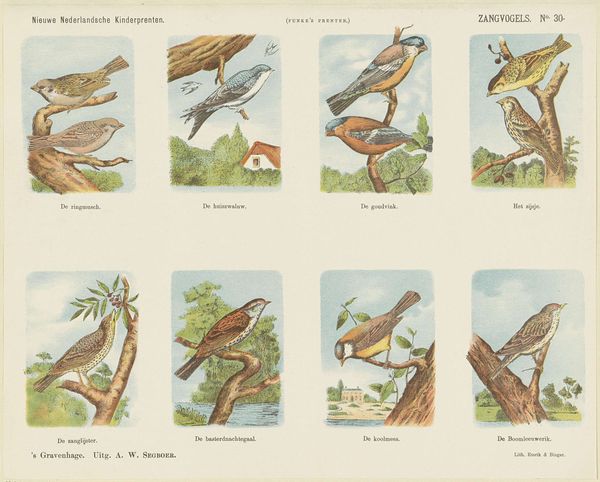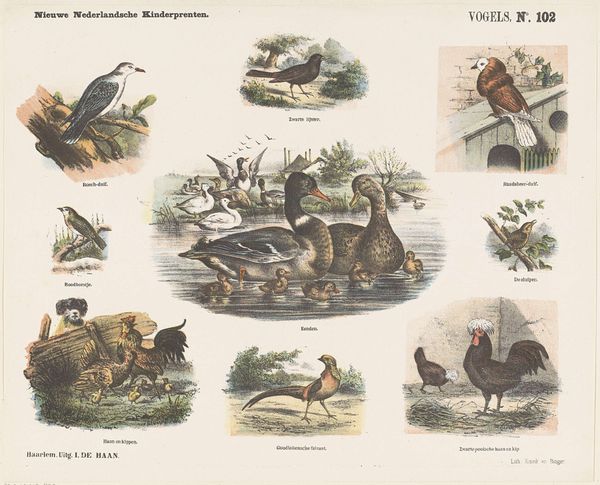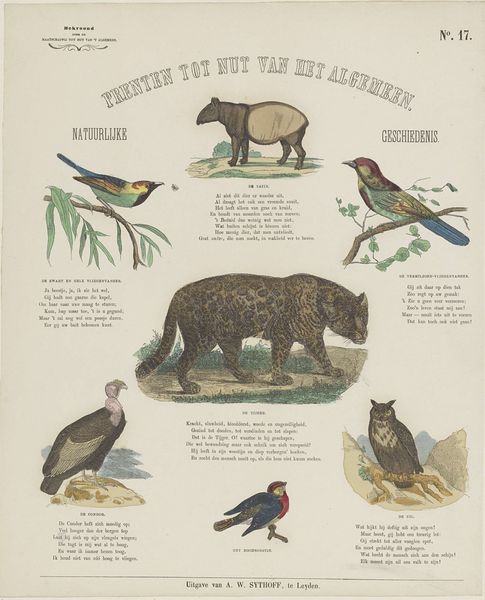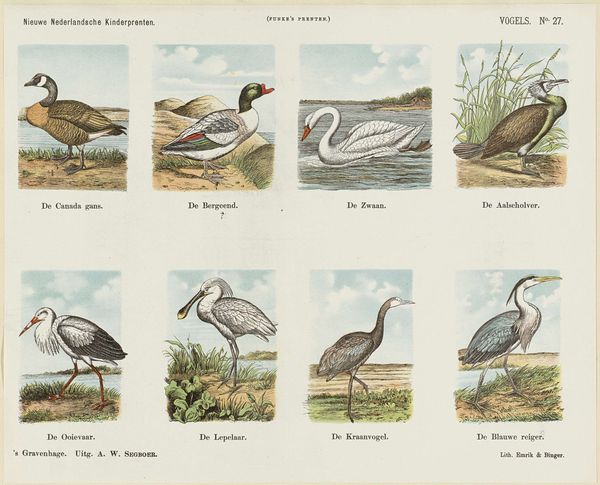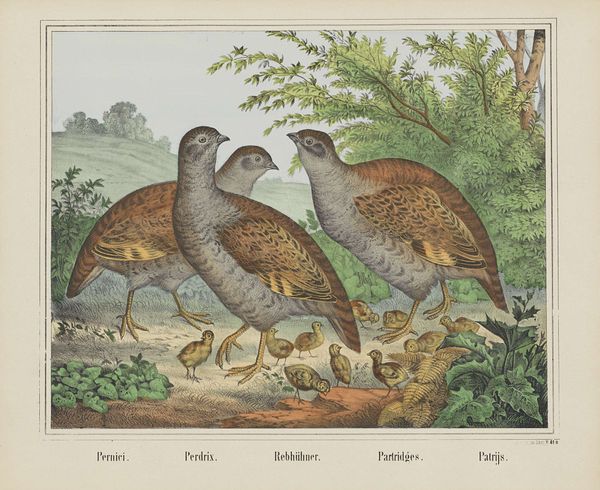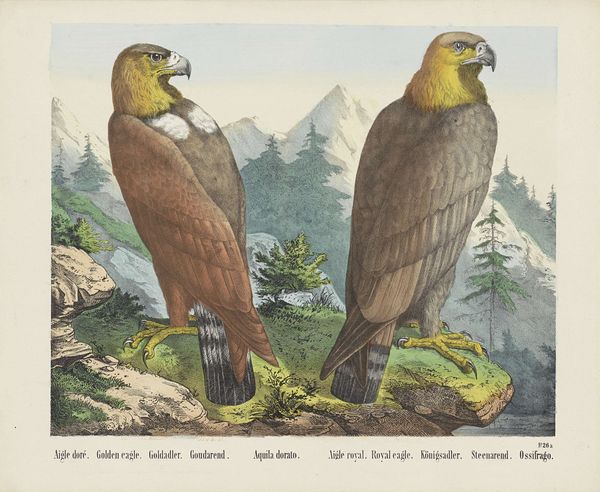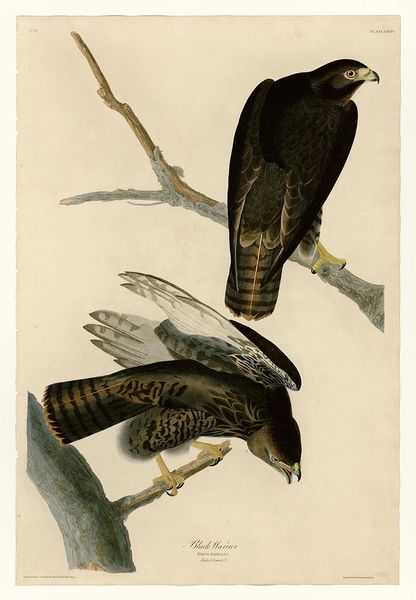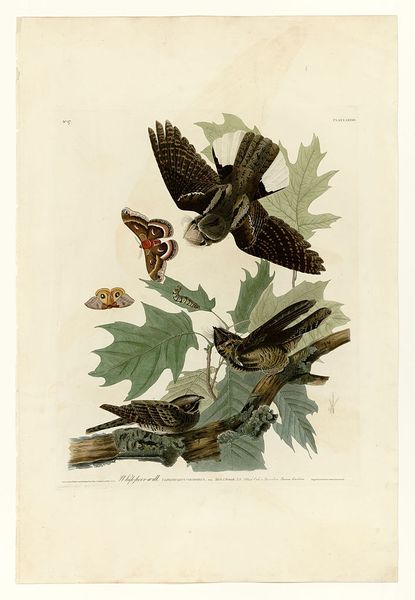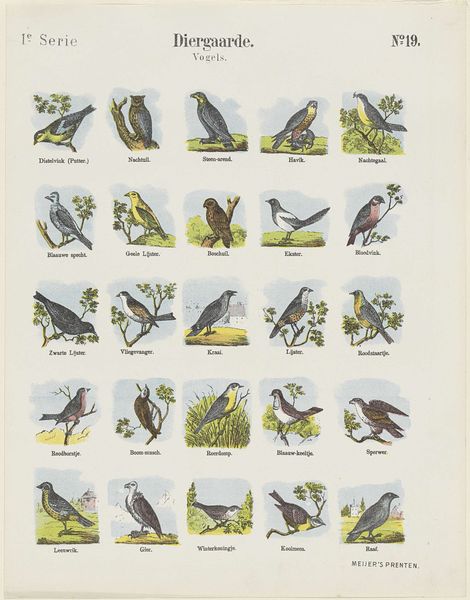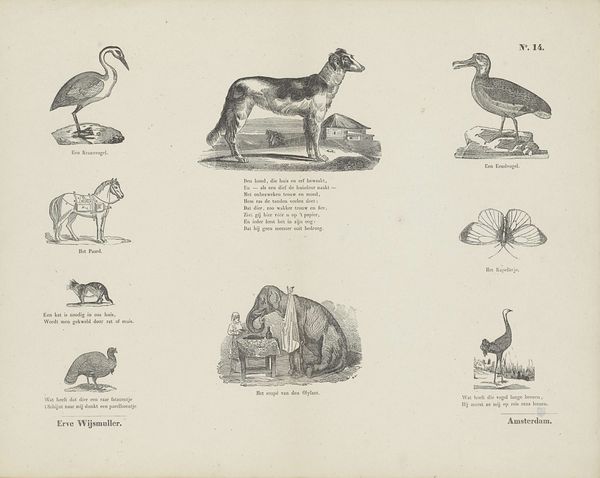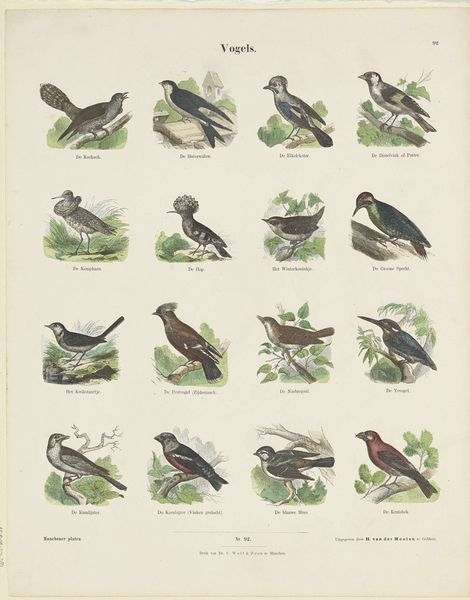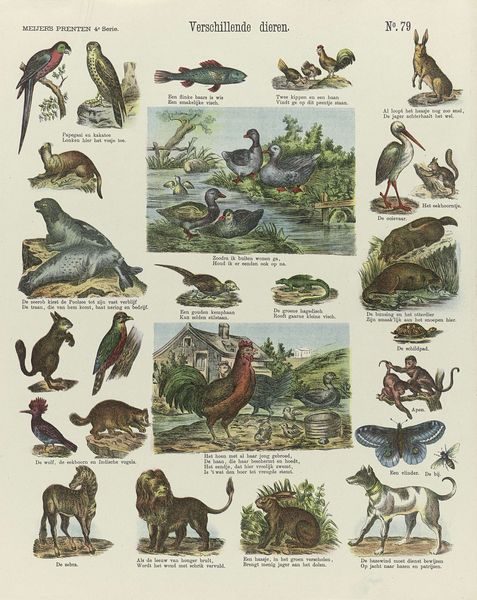
lithograph, print
#
animal
#
lithograph
# print
#
landscape
#
figuration
#
watercolor
#
realism
Dimensions: height 345 mm, width 430 mm
Copyright: Rijks Museum: Open Domain
Curator: This is "Roofvogels," or "Birds of Prey," a lithograph by Arie Willem Segboer, made sometime between 1903 and 1919. Editor: My first impression is one of scientific cataloging. It’s very neatly arranged with its various birds perched statically, as if pinned for observation. The overall tonality is quite muted, a pastel palette printed on what seems like basic paper. Curator: Precisely. This piece is part of a larger tradition of illustrated educational charts, a type of visual vocabulary intended for classrooms or even home study. Segboer presents these birds, these ‘symbols of the air,’ in a straightforward manner. The lithographic process itself allows for detailed reproduction, reinforcing its informative purpose. Note the labels accompanying each species: "Keiserlijke Arend", for example. Editor: The choice of lithography speaks volumes about its dissemination and affordability. This wouldn’t be some precious, singular work of art, but rather a mass-produced item, designed to educate a broader segment of the population about the natural world. It connects knowledge production to wider societal access. And you have to imagine children coloring these in their spare time. Curator: Absolutely. Consider also the archetypal resonance of birds of prey— freedom, power, the hunt. These are not simply scientific observations; they also subtly convey ideas about dominance and the natural order. This arrangement mimics earlier symbolic bestiaries, although here naturalism serves as its guide. Editor: And this blend is fascinating! The attempt at scientific accuracy meets the aesthetic choices afforded by the lithographic process. It's all about the accessible making of images. One considers the labor that would go into drawing these lithographic stones with care and clarity. Curator: Seeing it through that lens enriches my own appreciation. Segboer successfully intertwines observation, artistry and, perhaps, a touch of embedded ideology about the role of "higher" animals in nature. Editor: Indeed. It is a great reminder of how art's purpose is not merely aesthetic but functional too, embedded with pedagogical aspirations that rely heavily on process and the possibilities of its time.
Comments
No comments
Be the first to comment and join the conversation on the ultimate creative platform.
